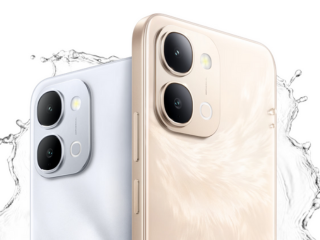- Home
- Chandrayaan
- Chandrayaan News
- Chandrayaan 3 Launch: How ISRO's Third Lunar Mission Is Different From Chandrayaan 2
Chandrayaan-3 Launch: How ISRO's Third Lunar Mission Is Different From Chandrayaan-2
Chandrayaan-3 consists of a Lander module (LM), Propulsion module (PM), and a Rover.
The lander on Chandrayaan-3 will aim to soft land at a specified lunar site
Chandrayaan-3, the upcoming lunar mission from Indian Space Research Organisation (ISRO), is scheduled to lift off on July 14 at 2:35pm IST. This will be ISRO's third mission to the Moon. Chandrayaan-3 will be launched in the coming days as the successor to Chandrayaan-2, which was sent towards the lunar surface approximate four years ago, on July 22, 2019. Unfortunately, the previous lunar mission faced partial failure due to it crash-landing on the surface of the Moon.
While most of the functions and goals of the two missions are similar, ISRO has made a few changes to Chandrayaan-3 in order to avoid the mistakes that led to the partial failure of Chandrayaan-2.
Chandrayaan 3 mission details
As mentioned above, the Chandrayaan-3 spacecraft is now scheduled to lift-off on July 14 at 2:35 pm from Satish Dhawan Space Centre, Sriharikota. The mission will be launched by Launch Vehicle Mark-III. The lander of Chandrayaan-3 is expected to soft-land on the surface of the Moon on August 23 or 24, nine days after the launch.
The lander on Chandrayaan-3 will aim to soft land at a specified lunar site, while the rover's responsibility will be to conduct on-site chemical analysis of the lunar surface. The mission will last for one lunar day, which is equivalent to 14 days on Earth.
Chandrayaan-2 vs Chandrayaan-3: The differences
The Chandrayaan-2 comprised an Orbiter, Vikram Lander, and Pragyan Rover, whereas the Chandrayaan-3 consists of a Lander module (LM), Propulsion module (PM), and a Rover. It carries a payload called Spectro-polarimetry of HAbitable Planet Earth (SHAPE), equipped with the propulsion model. The orbiter from Chandrayaan-2 will be used for the upcoming mission.
As ISRO stated, the Chandrayaan-3 will get two lander hazard detection and avoidance cameras as compared to Chandrayaan-2, which only carried one such camera, and Chandrayaan-3's cameras are designed to be more robust than its predecessor.
The space organisation has also conducted lander leg mechanism performance test on Chandrayaan-3 to ensure the strength of the legs.
Catch the latest from the Consumer Electronics Show on Gadgets 360, at our CES 2026 hub.
Related Stories
- Samsung Galaxy Unpacked 2025
- ChatGPT
- Redmi Note 14 Pro+
- iPhone 16
- Apple Vision Pro
- Oneplus 12
- OnePlus Nord CE 3 Lite 5G
- iPhone 13
- Xiaomi 14 Pro
- Oppo Find N3
- Tecno Spark Go (2023)
- Realme V30
- Best Phones Under 25000
- Samsung Galaxy S24 Series
- Cryptocurrency
- iQoo 12
- Samsung Galaxy S24 Ultra
- Giottus
- Samsung Galaxy Z Flip 5
- Apple 'Scary Fast'
- Housefull 5
- GoPro Hero 12 Black Review
- Invincible Season 2
- JioGlass
- HD Ready TV
- Laptop Under 50000
- Smartwatch Under 10000
- Latest Mobile Phones
- Compare Phones
- Vivo Y500i
- OnePlus Turbo 6V
- OnePlus Turbo 6
- Itel Zeno 20 Max
- OPPO Reno 15 Pro Mini 5G
- Poco M8 Pro 5G
- Motorola Signature
- Vivo Y50e 5G
- Lenovo Yoga Slim 7x (2025)
- Lenovo Yoga Slim 7a
- Realme Pad 3
- OPPO Pad Air 5
- Xiaomi Watch 5
- Huawei Watch 10th Anniversary Edition
- Acerpure Nitro Z Series 100-inch QLED TV
- Samsung 43 Inch LED Ultra HD (4K) Smart TV (UA43UE81AFULXL)
- Asus ROG Ally
- Nintendo Switch Lite
- Haier 1.6 Ton 5 Star Inverter Split AC (HSU19G-MZAID5BN-INV)
- Haier 1.6 Ton 5 Star Inverter Split AC (HSU19G-MZAIM5BN-INV)
















